Registered Deaths of Female Adults, Classified as 'Murder', by way of 'Knife' … Cont.
In Accordance with the Forty-Forth through Fifty-Third Annual Reports of the Registrar-General of Births, Deaths, and Marriages in England:

Registered Deaths of Female Adults (Ages 20 - xx) throughout England, Classified as 'Murder', by way of 'Cut'/'Stab' (Blue) / 'Cut Throat' (Red): 1881-1890 (Click Image, to Enlarge in flickr)
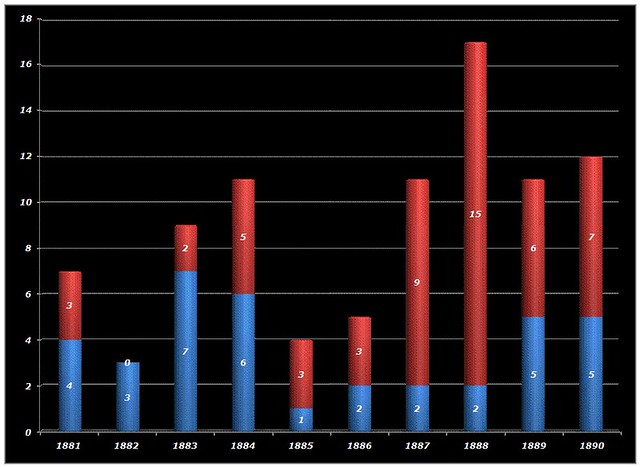
Registered Deaths of Female Adults (Ages 20 - xx) throughout England, Classified as 'Murder', by way of 'Cut'/'Stab' (Blue) & 'Cut Throat' (Red): 1881-1890 (Click Image, to Enlarge in flickr)
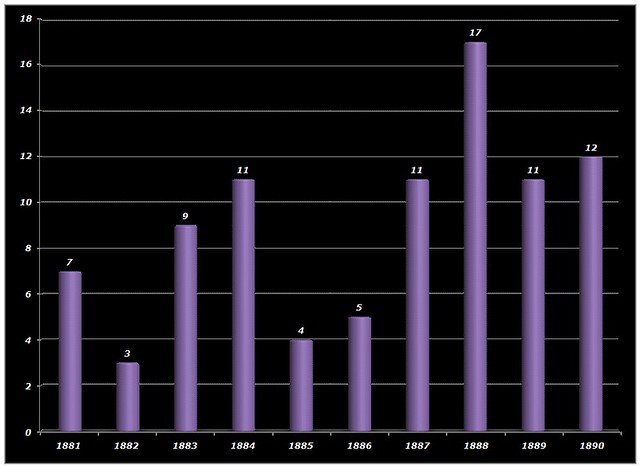
Registered Deaths of Female Adults (Ages 20 - xx) throughout England, Classified as 'Murder', by way of 'Cut'/'Stab' or 'Cut Throat': 1881-1890 (Click Image, to Enlarge in flickr)
Registered Deaths of Female Adults (Ages 20 - xx) throughout England, Classified as 'Murder', by way of 'Cut Throat' or 'Cut'/'Stab'
1881: 7
1882: 3
1883: 9
1884: 11
1885: 4
1886: 5
1887: 11
1888: 17
1889: 11
1890: 12
---
Range: 3 - 17
- Mid-Range (i.e. 'Range Mid-Point'): 10.00
- Median: 10.00
- Mean (i.e. 'Average'): 9.00
- Year, in which We are Most Interested (i.e. 1888): 17.00
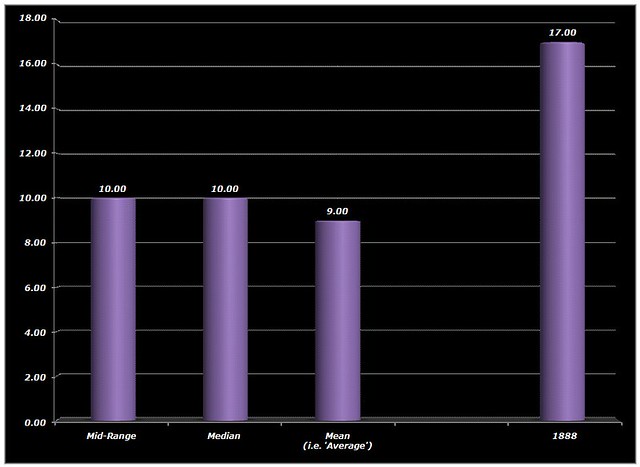
Registered Deaths of Female Adults (Ages 20 - xx) throughout England, Classified as 'Murder', by way of 'Cut'/'Stab' or 'Cut Throat': 1881-1890 (Click Image, to Enlarge in flickr)
In Accordance with the Forty-Forth through Fifty-Third Annual Reports of the Registrar-General of Births, Deaths, and Marriages in England:

Registered Deaths of Female Adults (Ages 20 - xx) throughout England, Classified as 'Murder', by way of 'Cut'/'Stab' (Blue) / 'Cut Throat' (Red): 1881-1890 (Click Image, to Enlarge in flickr)

Registered Deaths of Female Adults (Ages 20 - xx) throughout England, Classified as 'Murder', by way of 'Cut'/'Stab' (Blue) & 'Cut Throat' (Red): 1881-1890 (Click Image, to Enlarge in flickr)

Registered Deaths of Female Adults (Ages 20 - xx) throughout England, Classified as 'Murder', by way of 'Cut'/'Stab' or 'Cut Throat': 1881-1890 (Click Image, to Enlarge in flickr)
Registered Deaths of Female Adults (Ages 20 - xx) throughout England, Classified as 'Murder', by way of 'Cut Throat' or 'Cut'/'Stab'
1881: 7
1882: 3
1883: 9
1884: 11
1885: 4
1886: 5
1887: 11
1888: 17
1889: 11
1890: 12
---
Range: 3 - 17
- Mid-Range (i.e. 'Range Mid-Point'): 10.00
- Median: 10.00
- Mean (i.e. 'Average'): 9.00
- Year, in which We are Most Interested (i.e. 1888): 17.00

Registered Deaths of Female Adults (Ages 20 - xx) throughout England, Classified as 'Murder', by way of 'Cut'/'Stab' or 'Cut Throat': 1881-1890 (Click Image, to Enlarge in flickr)

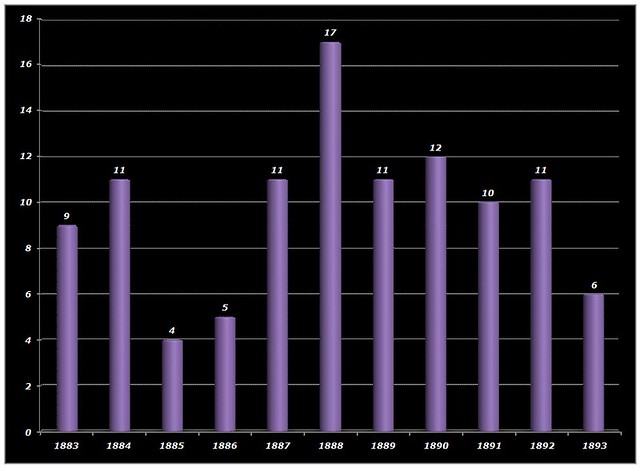

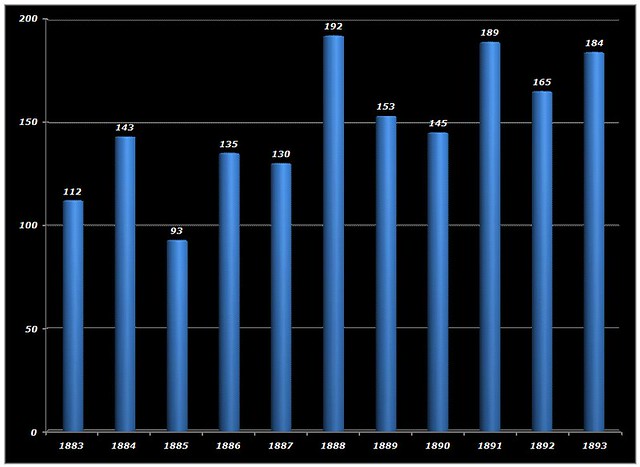
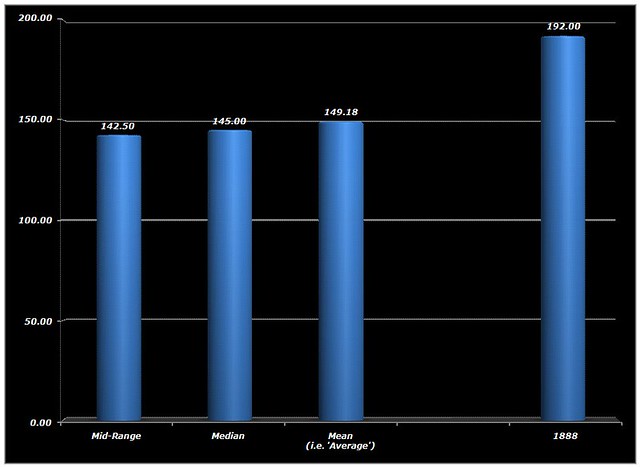
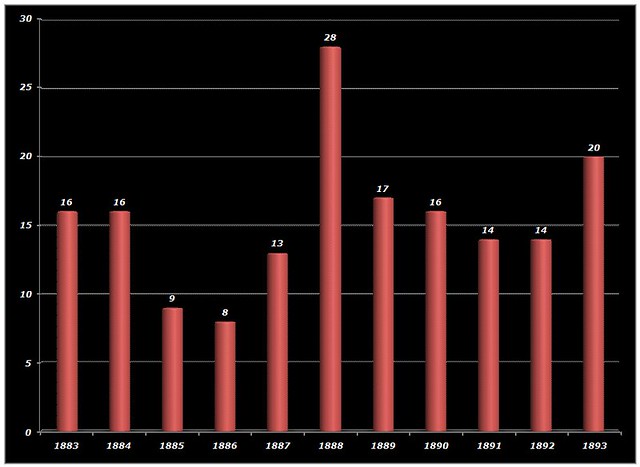
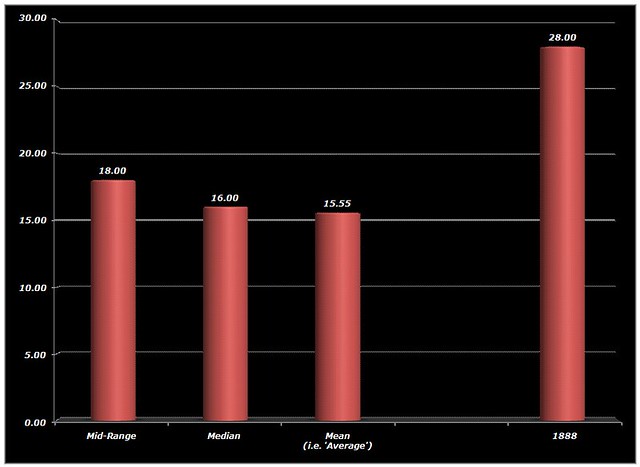

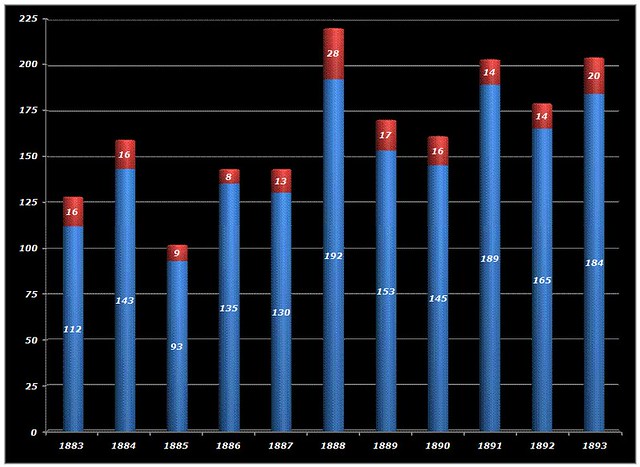
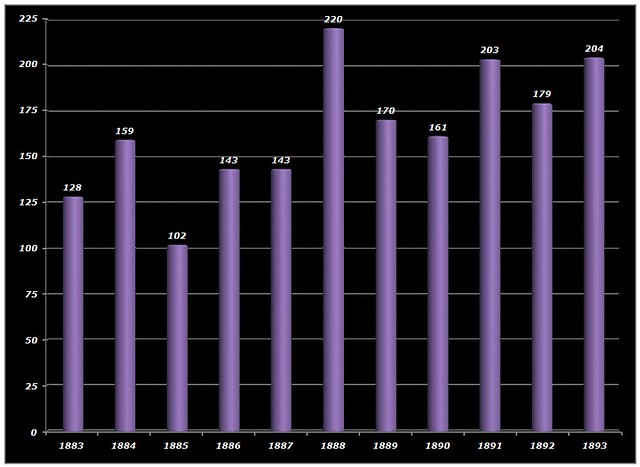
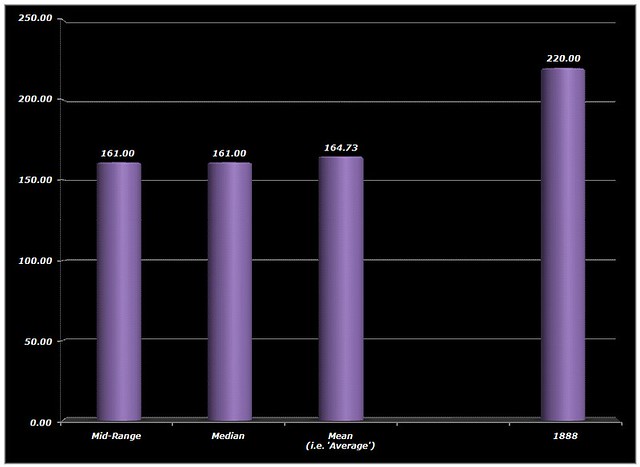
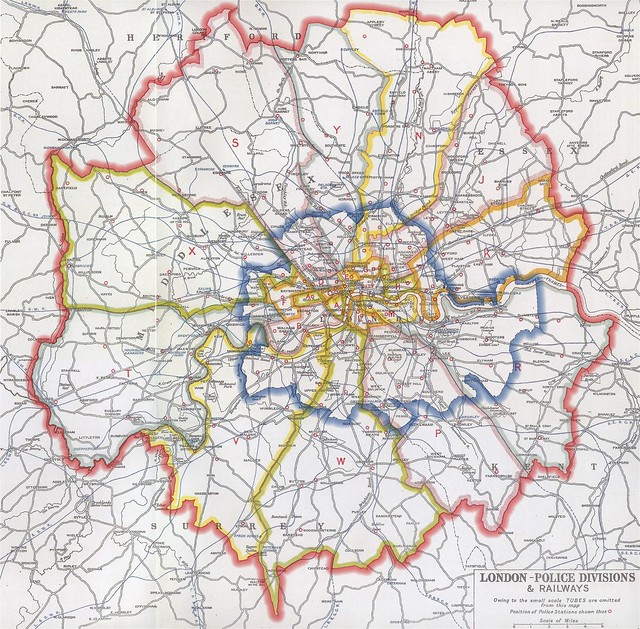

Comment